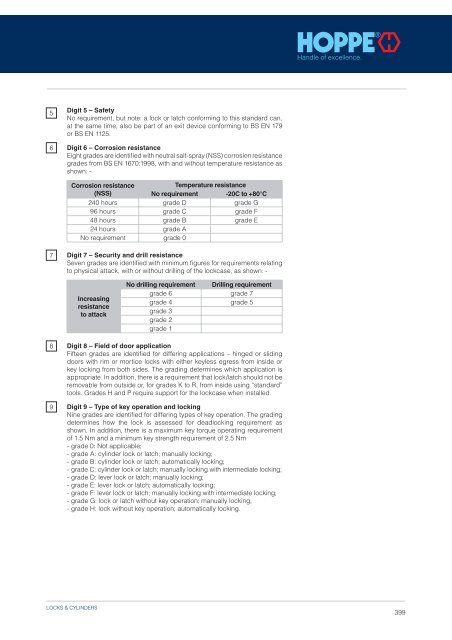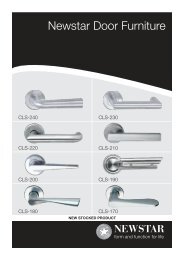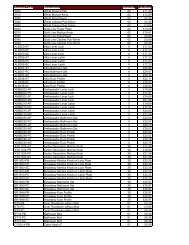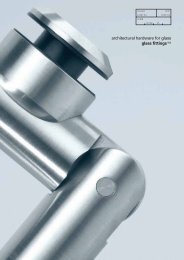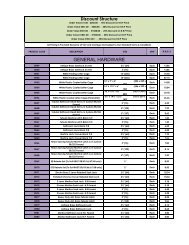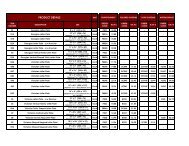Locks & Cylinders - Architectural Hardware Direct
Locks & Cylinders - Architectural Hardware Direct
Locks & Cylinders - Architectural Hardware Direct
Create successful ePaper yourself
Turn your PDF publications into a flip-book with our unique Google optimized e-Paper software.
5<br />
6<br />
Digit 5 – Safety<br />
No requirement, but note: a lock or latch conforming to this standard can,<br />
at the same time, also be part of an exit device conforming to BS EN 179<br />
or BS EN 1125.<br />
Digit 6 – Corrosion resistance<br />
Eight grades are identifi ed with neutral salt-spray (NSS) corrosion resistance<br />
grades from BS EN 1670:1998, with and without temperature resistance as<br />
shown: -<br />
Corrosion resistance<br />
Temperature resistance<br />
(NSS)<br />
No requirement -20C to +80°C<br />
240 hours grade D grade G<br />
96 hours grade C grade F<br />
48 hours grade B grade E<br />
24 hours grade A<br />
No requirement grade 0<br />
7<br />
Digit 7 – Security and drill resistance<br />
Seven grades are identifi ed with minimum fi gures for requirements relating<br />
to physical attack, with or without drilling of the lockcase, as shown: -<br />
Increasing<br />
resistance<br />
to attack<br />
No drilling requirement Drilling requirement<br />
grade 6 grade 7<br />
grade 4 grade 5<br />
grade 3<br />
grade 2<br />
grade 1<br />
8<br />
9<br />
Digit 8 – Field of door application<br />
Fifteen grades are identifi ed for differing applications – hinged or sliding<br />
doors with rim or mortice locks with either keyless egress from inside or<br />
key locking from both sides. The grading determines which application is<br />
appropriate. In addition, there is a requirement that lock/latch should not be<br />
removable from outside or, for grades K to R, from inside using “standard”<br />
tools. Grades H and P require support for the lockcase when installed.<br />
Digit 9 – Type of key operation and locking<br />
Nine grades are identifi ed for differing types of key operation. The grading<br />
determines how the lock is assessed for deadlocking requirement as<br />
shown. In addition, there is a maximum key torque operating requirement<br />
of 1.5 Nm and a minimum key strength requirement of 2.5 Nm<br />
- grade 0: Not applicable;<br />
- grade A: cylinder lock or latch; manually locking;<br />
- grade B: cylinder lock or latch; automatically locking;<br />
- grade C: cylinder lock or latch; manually locking with intermediate locking;<br />
- grade D: lever lock or latch; manually locking;<br />
- grade E: lever lock or latch; automatically locking;<br />
- grade F: lever lock or latch; manually locking with intermediate locking;<br />
- grade G: lock or latch without key operation; manually locking;<br />
- grade H: lock without key operation; automatically locking.<br />
LOCKS & CYLINDERS<br />
399


